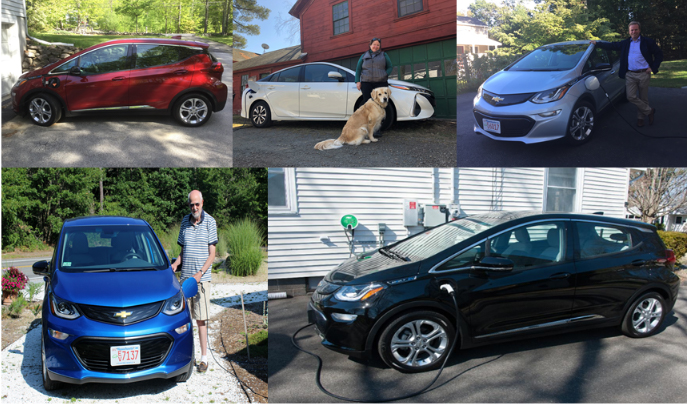Although charging an electric car is a bit different from refueling a conventional vehicle, choosing to drive an electric car does not require a substantial change in lifestyle. That means you can commute, go to the grocery store, and travel just like you always have, while dramatically reducing your carbon emissions. Here’s what you need to know about range and charging speed.
Range And Charging Speed
There are five things you should know about range and charging: three that impact how far you can go in your electric vehicle (EV) and two that impact how quickly you can charge.
Charging Levels
There are three levels of charging available for EVs today: Level I, Level II, and DC Fast Charging. Some EVs use one plug to charge a Levels I and II, and a second plug to charge at Level III or DC fast charging. Cars with the North American Charging Standard (NACS) port, use one port for all three levels of charging.
The NACS charging port was originally used only for Tesla cars. Tesla opened NACS for use by other manufacturers in 2022. Many manufacturers have announced that in 2025, their vehicles will come standard with a NACS port and in 2024 existing cars will gain access to an adapter to start using the Tesla charging network.
Here's a summary of the important things to know about each charging level.
| Level I | Level II | DC Fast Charging | |
|---|---|---|---|
| Voltage | 240 | 208/480 three-phase input | |
| Charging speed | ~4 miles/hr | 45-200miles/30 min* | |
| Charging port | J1772 or NACS | J1772 combo (also known as CCS DCFC or SAE Combo), CHAdeMO or NACS | |
| Can I install one in my home? | You don’t need to! Just use a normal 120 volt outlet and the charging cord that comes with your EV. | Yes (may require adding a 240 volt line if your home does not already have one) | No |
| Are there units publicly available? | Yes (See Charging on the go.) | Yes (See Charging on the go.) | Yes (See Charging on the go.) |
| Is an additional charging port required on the vehicle? | No** | No** | Yes** (standard on some vehicles, additional package on others ) |
*Level 2 charging speed largely depends on the vehicle model. Most all-electric cars will charge at 22+ miles/hr, while a plug-in hybrids will only add 12-15 miles/hr. **Cars using NACS are able to use converters to access stations with J1772/J1772 Combo. Cars that use J1772/J1772 Combo whose manufacturers have an agreement with Tesla can use a converter to access the Tesla Charging Network from 2024 onwards. | |||
DC Fast Charging Basics
Most EV drivers charge at Level I and Level II because it’s inexpensive, convenient, and readily available. Although Level II charging speeds may be different from car model to car model (ie, Tesla Model 3 vs Rivian R1S), the speed you’ll charge at is consistent over time. For example, a Hyundai Kona charging at Level II will add roughly 30 miles of range per hour spent charging whether you plug in at 50% charged or 80% charged. Similar vehicles, like the Chevrolet Bolt, Polestar 2, and the VW ID.4, have similar Level II charging speeds as the Kona.
However, with DC fast charging, there’s a lot more variability across different car models, charging stations, and even according to how much juice you have left when you plug in.
Here’s a generalized “cheat sheet” to help decode how quickly you can expect to charge with different models and charging stations. Cold weather will slow down charging speeds across the board.
| Fast charging power | Estimated miles gained in 30 minutes of charging | Cars |
|---|---|---|
| 50 kW | ~90 miles | Chevrolet Bolt, Nissan LEAF, Volkswagen e-Golf, Hyundai Ioniq EV |
| 77 kW | ~150 miles | Kia Niro EV, Hyundai Kona EV |
| 100 kW | ~166 miles | Nissan LEAF Plus, Audi e-Tron, Jaguar I-Pace |
| 150 kW | ~200 miles | Tesla models compatible with V2 Superchargers |
The key thing to remember about DC fast charging is that it’s fastest between 10% and 80% state of charge. Fast charging slows down to “Level II” speeds once you hit 80% capacity. Below, we’ve visualized a sample charging session for a Chevy Bolt.

The first hour of charging (assuming you plug in when the car reads 10% or less) happens at the car’s maximum DC fast charging speed. Once the vehicle is charged to nearly 80%, fast charging slows down and it may take much longer to top off the last 50 miles than the previous 180 miles. That’s why you might see automakers advertise their EVs’ fast charging speeds as “time to 80% charged.” Two important conclusions about DC fast charging that are important for EV drivers to know:
- There is a lot of variability in speed of DC fast charging depending on the weather, the station you’re plugged into, and the vehicle model itself.
- Charging to 100% using a DC fast charger may not be the best way to fuel an EV for a long trip. Tools like A Better Route Planner can help you optimize long-distance travel stops to minimize the time you spend waiting.
Charging equipment
The charger: The charger is built into the electric vehicle. The charging port accepts electricity from an outside source and stores it in the vehicle's battery. There are different types of charging ports, which becomes very important when we talk about DC Fast Charging. Here are four of the more common options:
Electric Vehicle Supply Equipment (EVSE)
The EVSE is the charging unit that plugs directly into your electric vehicle. EVSE units are used for both Level 2 and DC Fast Charging. The plug on the EVSE must match up with the charging port on the vehicle. Most vehicles come equipped with a cord that will plug into a normal wall outlet for a "trickle charge".




